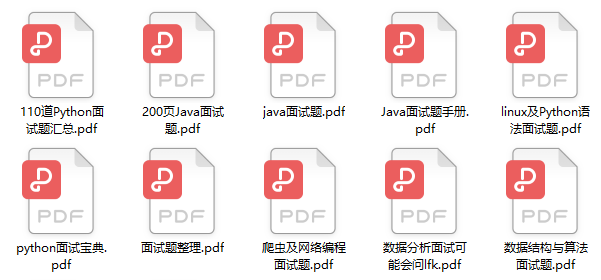面试官:Spring 注解 @After,@Around,@Before 的执行顺序是?
点击上方“码农突围”,马上关注
这里是码农充电第一站,回复“666”,获取一份专属大礼包 真爱,请设置“星标”或点个“在看

AOP中有@Before,@After,@Around,@AfterRunning注解等等。
首先上下自己的代码,定义了切点的定义
@Aspect
@Component
public class LogApsect {
private static final Logger logger = LoggerFactory.getLogger(LogApsect.class);
ThreadLocal startTime = new ThreadLocal<>();
// 第一个*代表返回类型不限
// 第二个*代表所有类
// 第三个*代表所有方法
// (..) 代表参数不限
@Pointcut("execution(public * com.lmx.blog.controller.*.*(..))")
@Order(2)
public void pointCut(){};
@Pointcut("@annotation(com.lmx.blog.annotation.RedisCache)")
@Order(1) // Order 代表优先级,数字越小优先级越高
public void annoationPoint(){};
@Before(value = "annoationPoint() || pointCut()")
public void before(JoinPoint joinPoint){
System.out.println("方法执行前执行......before");
ServletRequestAttributes attributes = (ServletRequestAttributes) RequestContextHolder.getRequestAttributes();
HttpServletRequest request = attributes.getRequest();
logger.info("<=====================================================");
logger.info("请求来源: =》" + request.getRemoteAddr());
logger.info("请求URL:" + request.getRequestURL().toString());
logger.info("请求方式:" + request.getMethod());
logger.info("响应方法:" + joinPoint.getSignature().getDeclaringTypeName() + "." + joinPoint.getSignature().getName());
logger.info("请求参数:" + Arrays.toString(joinPoint.getArgs()));
logger.info("------------------------------------------------------");
startTime.set(System.currentTimeMillis());
}
// 定义需要匹配的切点表达式,同时需要匹配参数
@Around("pointCut() && args(arg)")
public Response around(ProceedingJoinPoint pjp,String arg) throws Throwable{
System.out.println("name:" + arg);
System.out.println("方法环绕start...around");
String result = null;
try{
result = pjp.proceed().toString() + "aop String";
System.out.println(result);
}catch (Throwable e){
e.printStackTrace();
}
System.out.println("方法环绕end...around");
return (Response) pjp.proceed();
}
@After("within(com.lmx.blog.controller.*Controller)")
public void after(){
System.out.println("方法之后执行...after.");
}
@AfterReturning(pointcut="pointCut()",returning = "rst")
public void afterRunning(Response rst){
if(startTime.get() == null){
startTime.set(System.currentTimeMillis());
}
System.out.println("方法执行完执行...afterRunning");
logger.info("耗时(毫秒):" + (System.currentTimeMillis() - startTime.get()));
logger.info("返回数据:{}", rst);
logger.info("==========================================>");
}
@AfterThrowing("within(com.lmx.blog.controller.*Controller)")
public void afterThrowing(){
System.out.println("异常出现之后...afterThrowing");
}
}
@Before,@After,@Around注解的区别大家可以自行百度下。
总之就是@Around可以实现@Before和@After的功能,并且只需要在一个方法中就可以实现。
首先我们来测试一个方法用于获取数据库一条记录的
@RequestMapping("/achieve")
public Response achieve(){
System.out.println("方法执行-----------");
return Response.ok(articleDetailSercice.getPrimaryKeyById(1L));
}
以下是控制台打印的日志
方法执行前执行......before
2018-11-23 16:31:59.795 [http-nio-8888-exec-9] INFO c.l.blog.config.LogApsect - <=====================================================
2018-11-23 16:31:59.795 [http-nio-8888-exec-9] INFO c.l.blog.config.LogApsect - 请求来源: =》0:0:0:0:0:0:0:1
2018-11-23 16:31:59.795 [http-nio-8888-exec-9] INFO c.l.blog.config.LogApsect - 请求URL:http://localhost:8888/user/achieve
2018-11-23 16:31:59.795 [http-nio-8888-exec-9] INFO c.l.blog.config.LogApsect - 请求方式:GET
2018-11-23 16:31:59.795 [http-nio-8888-exec-9] INFO c.l.blog.config.LogApsect - 响应方法:com.lmx.blog.controller.UserController.achieve
2018-11-23 16:31:59.796 [http-nio-8888-exec-9] INFO c.l.blog.config.LogApsect - 请求参数:[]
2018-11-23 16:31:59.796 [http-nio-8888-exec-9] INFO c.l.blog.config.LogApsect - ------------------------------------------------------
方法执行-----------
2018-11-23 16:31:59.806 [http-nio-8888-exec-9] DEBUG c.l.b.m.A.selectPrimaryKey - ==> Preparing: select * from article_detail where id = ?
2018-11-23 16:31:59.806 [http-nio-8888-exec-9] DEBUG c.l.b.m.A.selectPrimaryKey - ==> Preparing: select * from article_detail where id = ?
2018-11-23 16:31:59.806 [http-nio-8888-exec-9] DEBUG c.l.b.m.A.selectPrimaryKey - ==> Parameters: 1(Long)
2018-11-23 16:31:59.806 [http-nio-8888-exec-9] DEBUG c.l.b.m.A.selectPrimaryKey - ==> Parameters: 1(Long)
2018-11-23 16:31:59.814 [http-nio-8888-exec-9] DEBUG c.l.b.m.A.selectPrimaryKey - <== Total: 1
2018-11-23 16:31:59.814 [http-nio-8888-exec-9] DEBUG c.l.b.m.A.selectPrimaryKey - <== Total: 1
方法之后执行...after.
方法执行完执行...afterRunning
2018-11-23 16:31:59.824 [http-nio-8888-exec-9] INFO c.l.blog.config.LogApsect - 耗时(毫秒):27
2018-11-23 16:31:59.824 [http-nio-8888-exec-9] INFO c.l.blog.config.LogApsect - 返回数据:com.lmx.blog.common.Response@8675ce5
2018-11-23 16:31:59.824 [http-nio-8888-exec-9] INFO c.l.blog.config.LogApsect - ==========================================>
可以看到,因为没有匹配@Around的规则,所以没有进行环绕通知。(PS:我定义的环绕通知意思是要符合是 controller 包下的方法并且方法必须带有参数,而上述方法没有参数,所以只走了@before和@after方法,不符合@Around的匹配逻辑)
我们再试一下另一个带有参数的方法
@RedisCache(type = Response.class)
@RequestMapping("/sendEmail")
public Response sendEmailToAuthor(String content){
System.out.println("测试执行次数");
return Response.ok(true);
}
以下是该部分代码的console打印
name:第二封邮件呢
方法环绕start...around
方法执行前执行......before
2018-11-23 16:34:55.347 [http-nio-8888-exec-2] INFO c.l.blog.config.LogApsect - <=====================================================
2018-11-23 16:34:55.347 [http-nio-8888-exec-2] INFO c.l.blog.config.LogApsect - 请求来源: =》0:0:0:0:0:0:0:1
2018-11-23 16:34:55.347 [http-nio-8888-exec-2] INFO c.l.blog.config.LogApsect - 请求URL:http://localhost:8888/user/sendEmail
2018-11-23 16:34:55.348 [http-nio-8888-exec-2] INFO c.l.blog.config.LogApsect - 请求方式:GET
2018-11-23 16:34:55.348 [http-nio-8888-exec-2] INFO c.l.blog.config.LogApsect - 响应方法:com.lmx.blog.controller.UserController.sendEmailToAuthor
2018-11-23 16:34:55.348 [http-nio-8888-exec-2] INFO c.l.blog.config.LogApsect - 请求参数:[第二封邮件呢]
2018-11-23 16:34:55.348 [http-nio-8888-exec-2] INFO c.l.blog.config.LogApsect - ------------------------------------------------------
测试执行次数
com.lmx.blog.common.Response@6d17f2fdaop String
方法环绕end...around
方法执行前执行......before
2018-11-23 16:34:55.349 [http-nio-8888-exec-2] INFO c.l.blog.config.LogApsect - <=====================================================
2018-11-23 16:34:55.349 [http-nio-8888-exec-2] INFO c.l.blog.config.LogApsect - 请求来源: =》0:0:0:0:0:0:0:1
2018-11-23 16:34:55.349 [http-nio-8888-exec-2] INFO c.l.blog.config.LogApsect - 请求URL:http://localhost:8888/user/sendEmail
2018-11-23 16:34:55.349 [http-nio-8888-exec-2] INFO c.l.blog.config.LogApsect - 请求方式:GET
2018-11-23 16:34:55.349 [http-nio-8888-exec-2] INFO c.l.blog.config.LogApsect - 响应方法:com.lmx.blog.controller.UserController.sendEmailToAuthor
2018-11-23 16:34:55.349 [http-nio-8888-exec-2] INFO c.l.blog.config.LogApsect - 请求参数:[第二封邮件呢]
2018-11-23 16:34:55.350 [http-nio-8888-exec-2] INFO c.l.blog.config.LogApsect - ------------------------------------------------------
测试执行次数
方法之后执行...after.
方法执行完执行...afterRunning
2018-11-23 16:34:55.350 [http-nio-8888-exec-2] INFO c.l.blog.config.LogApsect - 耗时(毫秒):0
2018-11-23 16:34:55.350 [http-nio-8888-exec-2] INFO c.l.blog.config.LogApsect - 返回数据:com.lmx.blog.common.Response@79f85428
2018-11-23 16:34:55.350 [http-nio-8888-exec-2] INFO c.l.blog.config.LogApsect - ==========================================>
显而易见,该方法符合 @Around 环绕通知的匹配规则,所以进入了@Around的逻辑,但是发现了问题,所有的方法都被执行了2次,不管是切面层还是方法层。(有人估计要问我不是用的自定义注解 @RedisCache(type = Response.class) 么。为什么会符合 @Around的匹配规则呢,这个等会在下面说)
我们分析日志的打印顺序可以得出,在执行环绕方法时候,会优先进入 @Around下的方法。@Around的方法再贴一下代码。
// 定义需要匹配的切点表达式,同时需要匹配参数
@Around("pointCut() && args(arg)")
public Response around(ProceedingJoinPoint pjp,String arg) throws Throwable{
System.out.println("name:" + arg);
System.out.println("方法环绕start...around");
String result = null;
try{
result = pjp.proceed().toString() + "aop String";
System.out.println(result);
}catch (Throwable e){
e.printStackTrace();
}
System.out.println("方法环绕end...around");
return (Response) pjp.proceed();
}
打印了前两行代码以后,转而去执行了 @Before方法,是因为中途触发了 ProceedingJoinPoint.proceed() 方法。
这个方法的作用是执行被代理的方法,也就是说执行了这个方法之后会执行我们controller的方法,而后执行 @before,@after,然后回到@Around执行未执行的方法,最后执行 @afterRunning,如果有异常抛出能执行 @AfterThrowing
也就是说环绕的执行顺序是 @Around→@Before→@After→@Around执行 ProceedingJoinPoint.proceed() 之后的操作→@AfterRunning(如果有异常→@AfterThrowing)
而我们上述的日志相当于把上述结果执行了2遍,根本原因在于 ProceedingJoinPoint.proceed() 这个方法,可以发现在@Around 方法中我们使用了2次这个方法,然而每次调用这个方法时都会走一次@Before→@After→@Around执行 ProceedingJoinPoint.proceed() 之后的操作→@AfterRunning(如果有异常→@AfterThrowing)。
因此问题是出现在这里。所以更改@Around部分的代码即可解决该问题。更改之后的代码如下:
@Around("pointCut() && args(arg)")
public Response around(ProceedingJoinPoint pjp,String arg) throws Throwable{
System.out.println("name:" + arg);
System.out.println("方法环绕start...around");
String result = null;
Object object = pjp.proceed();
try{
result = object.toString() + "aop String";
System.out.println(result);
}catch (Throwable e){
e.printStackTrace();
}
System.out.println("方法环绕end...around");
return (Response) object;
}
更改代码之后的运行结果
name:第二封邮件呢
方法环绕start...around
方法执行前执行......before
2018-11-23 16:52:14.315 [http-nio-8888-exec-4] INFO c.l.blog.config.LogApsect - <=====================================================
2018-11-23 16:52:14.315 [http-nio-8888-exec-4] INFO c.l.blog.config.LogApsect - 请求来源: =》0:0:0:0:0:0:0:1
2018-11-23 16:52:14.315 [http-nio-8888-exec-4] INFO c.l.blog.config.LogApsect - 请求URL:http://localhost:8888/user/sendEmail
2018-11-23 16:52:14.315 [http-nio-8888-exec-4] INFO c.l.blog.config.LogApsect - 请求方式:GET
2018-11-23 16:52:14.316 [http-nio-8888-exec-4] INFO c.l.blog.config.LogApsect - 响应方法:com.lmx.blog.controller.UserController.sendEmailToAuthor
2018-11-23 16:52:14.316 [http-nio-8888-exec-4] INFO c.l.blog.config.LogApsect - 请求参数:[第二封邮件呢]
2018-11-23 16:52:14.316 [http-nio-8888-exec-4] INFO c.l.blog.config.LogApsect - ------------------------------------------------------
测试执行次数
com.lmx.blog.common.Response@1b1c76afaop String
方法环绕end...around
方法之后执行...after.
方法执行完执行...afterRunning
2018-11-23 16:52:14.316 [http-nio-8888-exec-4] INFO c.l.blog.config.LogApsect - 耗时(毫秒):0
2018-11-23 16:52:14.316 [http-nio-8888-exec-4] INFO c.l.blog.config.LogApsect - 返回数据:com.lmx.blog.common.Response@1b1c76af
2018-11-23 16:52:14.316 [http-nio-8888-exec-4] INFO c.l.blog.config.LogApsect - ==========================================>
回到上述未解决的问题,为什么我定义了切面的另一个注解还可以进入@Around方法呢?
因为我们的方法仍然在controller下,因此满足该需求,如果我们定义了controller包下的某个controller才有用。
例如:
@Pointcut("execution(public * com.lmx.blog.controller.UserController.*(..))")
而如果我们刚才定义的方法是写在 TestController 之下的,那么就不符合 @Around方法的匹配规则了,也不符合@before和@after的注解规则,因此不会匹配任何一个规则,如果需要匹配特定的方法,可以用自定义的注解形式或者特性controller下的方法
①:特性的注解形式
@Pointcut("@annotation(com.lmx.blog.annotation.RedisCache)")
@Order(1) // Order 代表优先级,数字越小优先级越高
public void annoationPoint(){};
然后在所需要的方法上加入 @RedisCache注解,在@Before,@After,@Around等方法上添加该切点的方法名(“annoationPoint()”),如果有多个注解需要匹配则用 || 隔开
②:指定controller或者指定controller下的方法
@Pointcut("execution(public * com.lmx.blog.controller.UserController.*(..))")
@Order(2)
public void pointCut(){};
该部分代码是指定了 com.lmx.blog.controller包下的UserController下的所有方法。
第一个*代表的是返回类型不限
第二个*代表的是该controller下的所有方法,(..)代表的是参数不限
总结
当方法符合切点规则不符合环绕通知的规则时候,执行的顺序如下
@Before→@After→@AfterRunning(如果有异常→@AfterThrowing)
当方法符合切点规则并且符合环绕通知的规则时候,执行的顺序如下
@Around→@Before→@Around→@After执行 ProceedingJoinPoint.proceed() 之后的操作→@AfterRunning(如果有异常→@AfterThrowing)
原文链接:https://blog.csdn.net/lmx125254/article/details/84398412
版权声明:本文为CSDN博主「Leonis丶L」的原创文章,遵循CC 4.0 BY-SA版权协议,转载请附上原文出处链接及本声明。
-End-
最近有一些小伙伴,让我帮忙找一些 面试题 资料,于是我翻遍了收藏的 5T 资料后,汇总整理出来,可以说是程序员面试必备!所有资料都整理到网盘了,欢迎下载!
点击👆卡片,关注后回复【
面试题】即可获取

